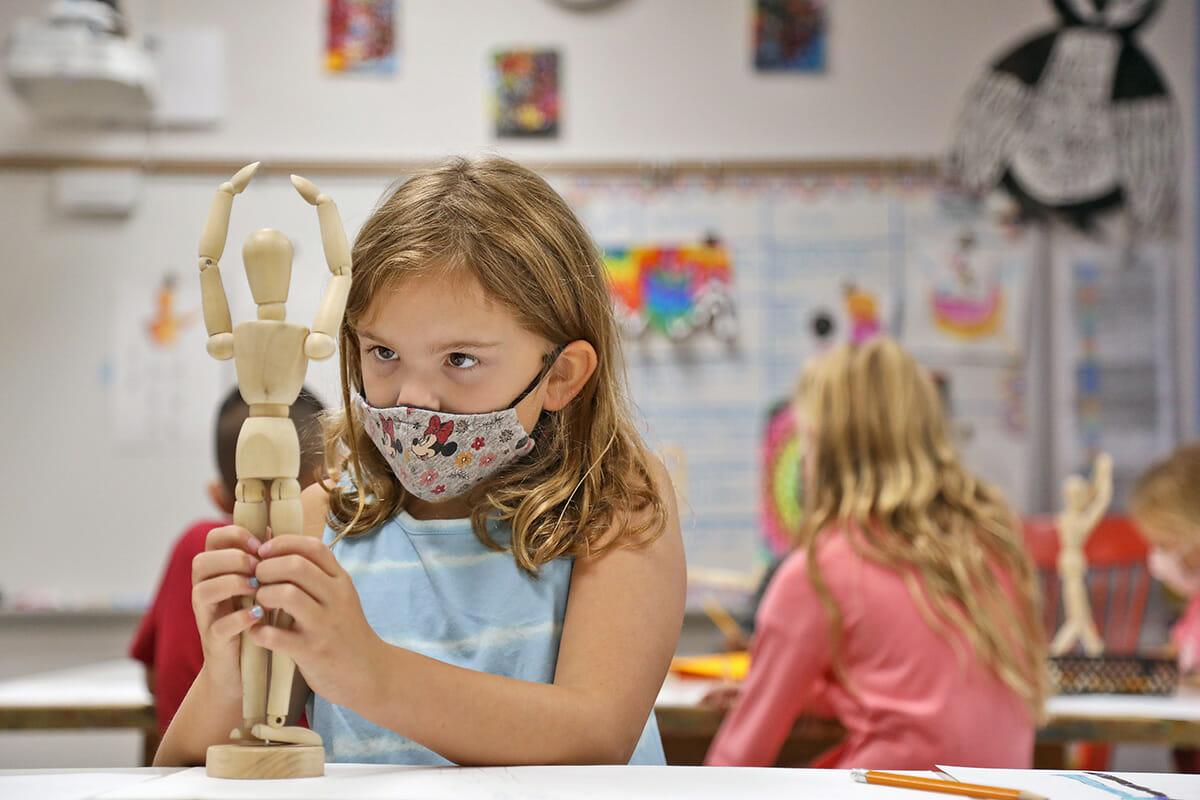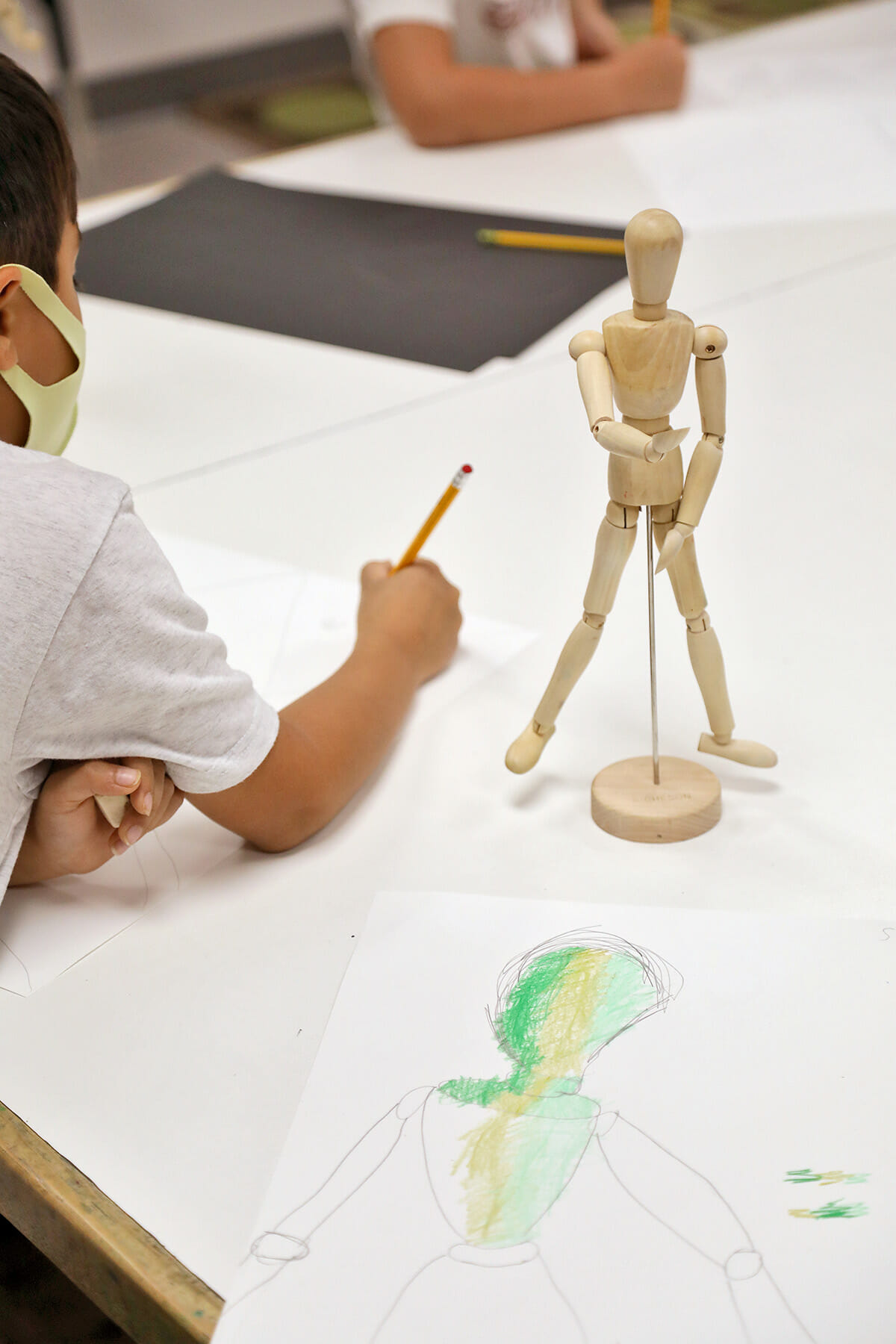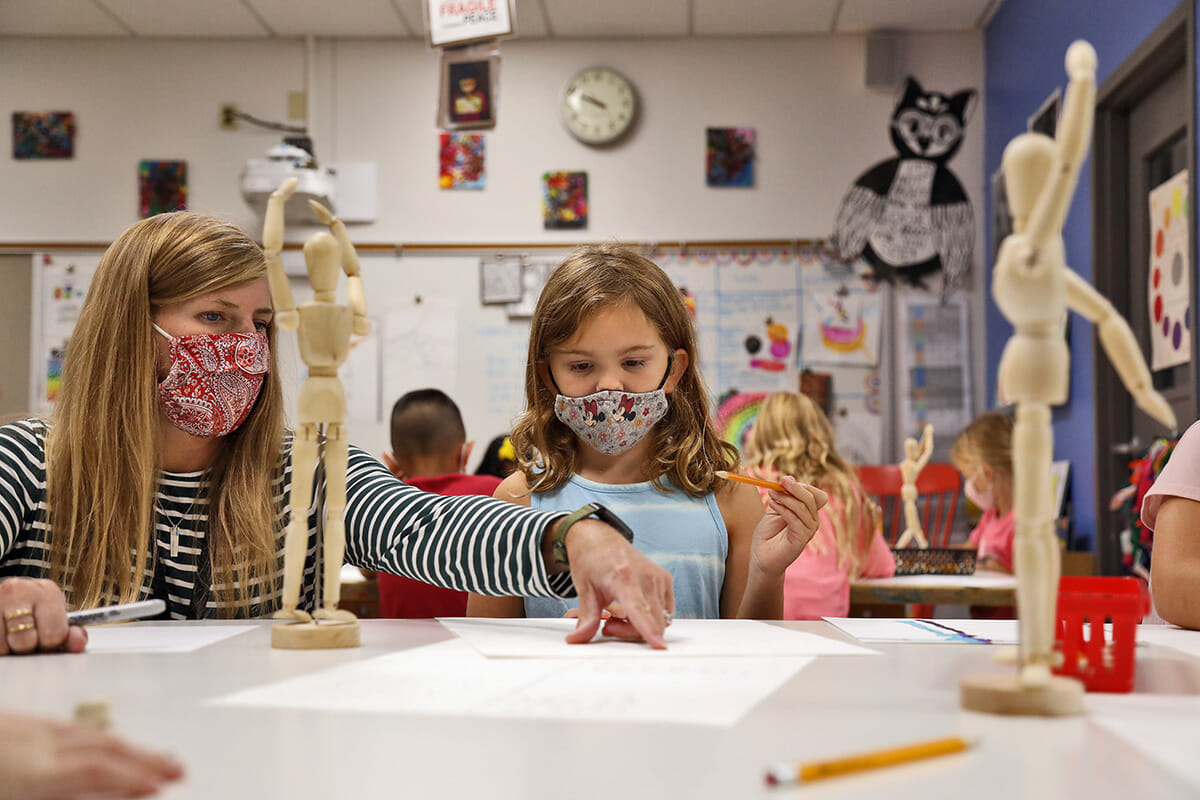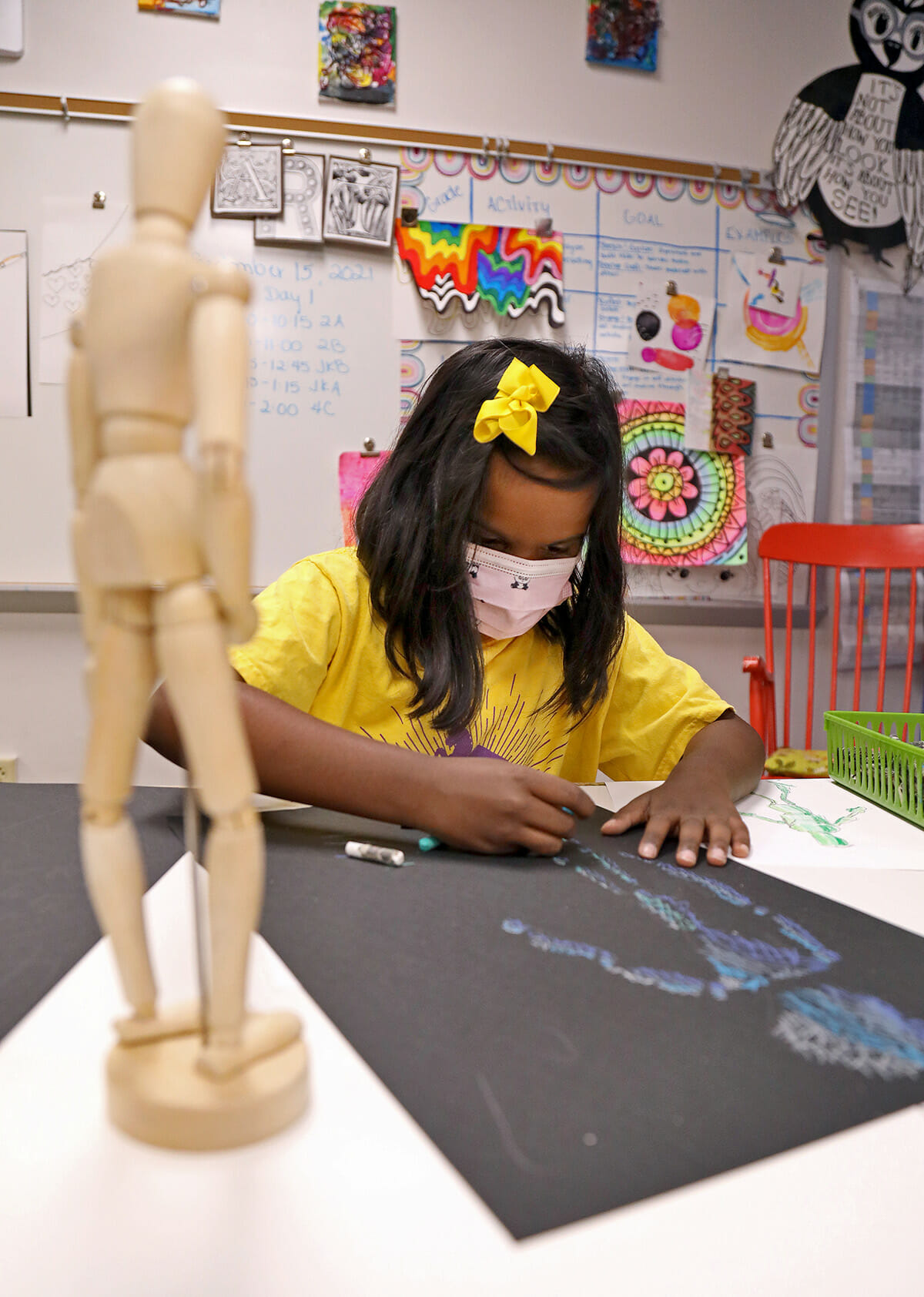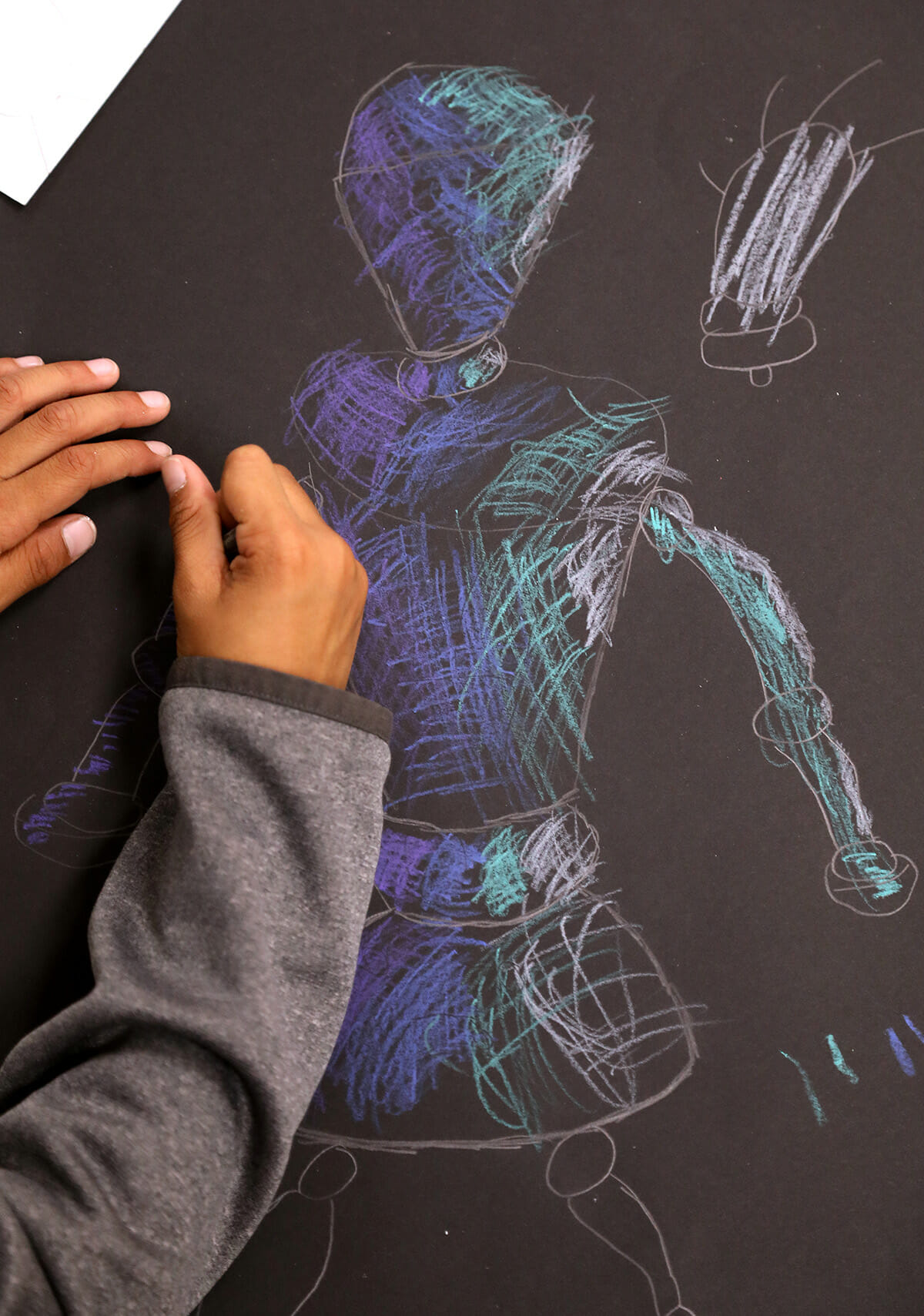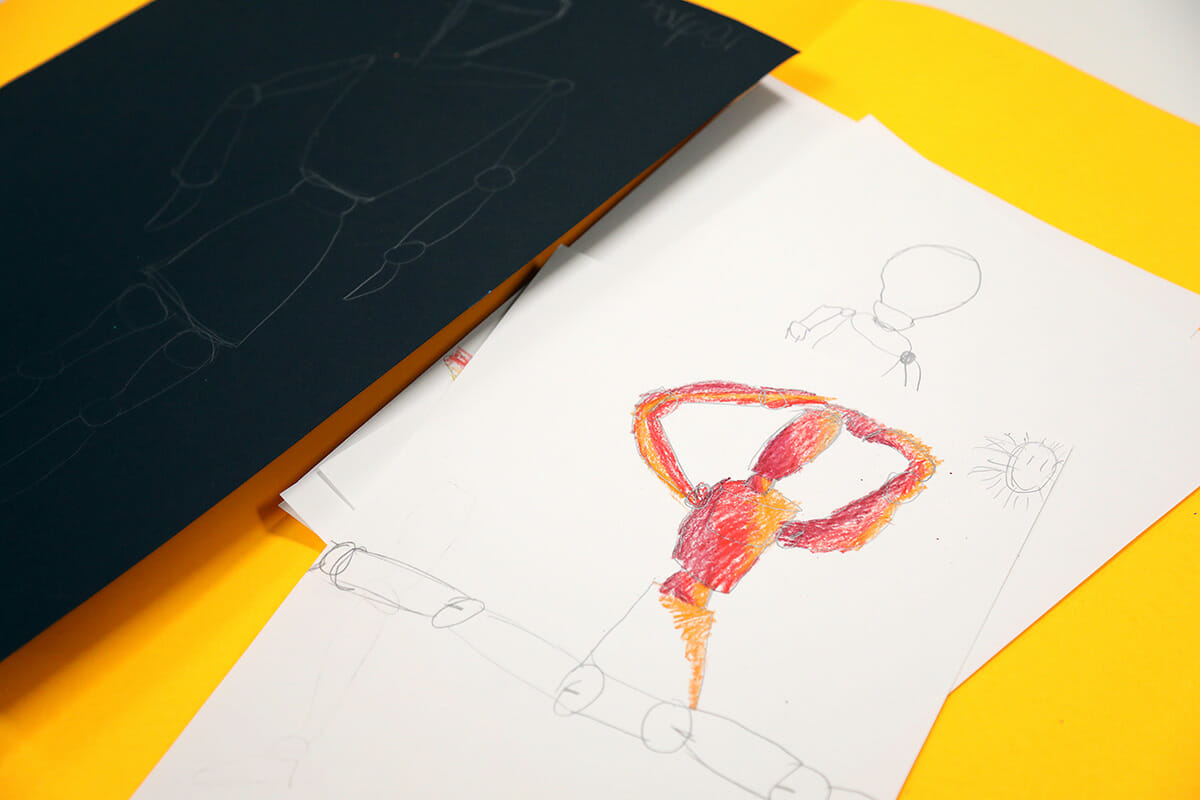Second-grade artists hit the studio this week, learning how to draw 3-D forms and then adding value to their drawings. The exercise encourages students to use the Studio Habit of OBSERVE, which means they actively think, “I can look more closely and notice things I may not have at first.” (See below for the full list of Studio Habits our Beasley art students learn.)
First, the artists studied wooden 3-D figures, noticing different lines that create forms (i.e. curved, diagonal). They considered, “How can I turn the lines I draw into something three-dimensional?”
Then, after sketching and observing the figures, students drew a large figure, adding value by using crosshatch marks in light, medium, and dark colors.
The 3-D drawings are going to be added to a colorful background that is divided into several spaces on repeating patterns and shapes.
“The project is building skills and confidence,” said Sarah Garner, Lower School Art Teacher. “Students are beginning to learn about some of the elements and principles of art and putting our studio habits into practice.”
Eight Studio Habits of Mind
By Jillian Hogan, Lois Hetland, Diane B. Jaquith, and Ellen Winner
- Develop Craft: Learning to use and take care of tools, materials, art, space, and artistic conventions
- Engage & Persist: Finding personally meaningful projects and sticking to them
- Envision: Imagining new artworks and steps to bring them to life
- Express: making works that convey personal meaning and interpreting meaning in the works of others
- Observe: looking closely and noticing what you may not have observed before
- Reflect: Talking about one’s own art and process
- Stretch & Explore: playing, trying new things, making mistakes, and learning from them
- Understanding Community: learning about what artists make, learning to collaborate, and understanding that artists often work in groups
These habits are cyclical and can happen throughout the year.
